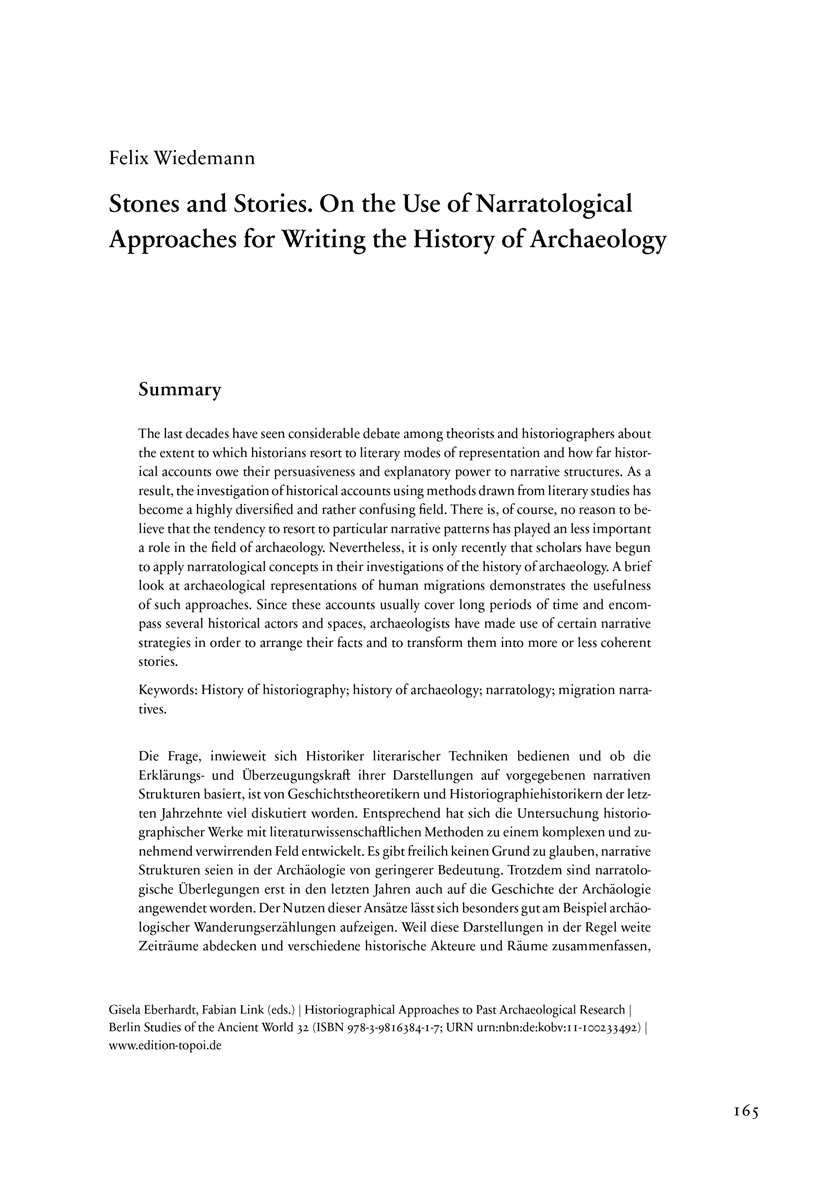Stones and Stories
On the Use of Narratological Approaches for Writing the History of Archaeology
The last decades have seen considerable debate among theorists and historiographers about the extent to which historians resort to literary modes of representation and how far historical accounts owe their persuasiveness and explanatory power to narrative structures. As a result, the investigation of historical accounts using methods drawn from literary studies has become a highly diversified and rather confusing field. There is, of course, no reason to believe that the tendency to resort to particular narrative patterns has played an less important a role in the field of archaeology. Nevertheless, it is only recently that scholars have begun to apply narratological concepts in their investigations of the history of archaeology. A brief look at archaeological representations of human migrations demonstrates the usefulness of such approaches. Since these accounts usually cover long periods of time and encompass several historical actors and spaces, archaeologists have made use of certain narrative strategies in order to arrange their facts and to transform them into more or less coherent stories.
Die Frage, inwieweit sich Historiker literarischer Techniken bedienen und ob die Erklärungs- und Überzeugungskraft ihrer Darstellungen auf vorgegebenen narrativen Strukturen basiert, ist von Geschichtstheoretikern und Historiographiehistorikern der letzten Jahrzehnte viel diskutiert worden. Entsprechend hat sich die Untersuchung historiographischer Werke mit literaturwissenschaftlichen Methoden zu einem komplexen und zunehmend verwirrenden Feld entwickelt. Es gibt freilich keinen Grund zu glauben, narrative Strukturen seien in der Archäologie von geringerer Bedeutung. Trotzdem sind narratologische Überlegungen erst in den letzten Jahren auch auf die Geschichte der Archäologie angewendet worden. Der Nutzen dieser Ansätze lässt sich besonders gut am Beispiel archäologischer Wanderungserzählungen aufzeigen. Weil diese Darstellungen in der Regel weite Zeiträume abdecken und verschiedene historische Akteure und Räume zusammenfassen, greifen Archäologen auf spezifische Erzählstrategien zurück, um ihre Fakten zu sortieren und in mehr oder weniger kohärente Geschichten zu transformieren.

